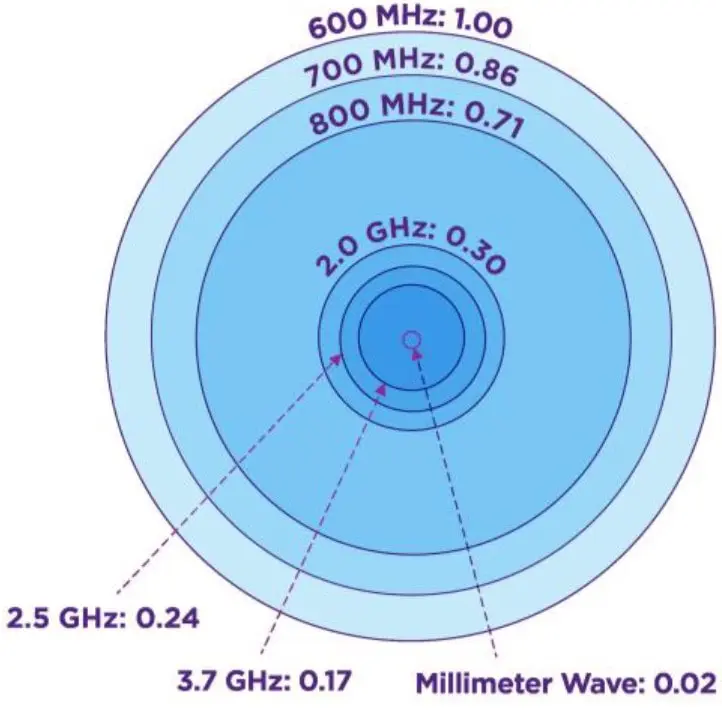
Those towering structures that dot our landscapes, play a crucial role in ensuring seamless wireless communication. From transmitting radio signals to our mobile devices, cell towers have a defined range that varies due to several factors. Gaining some insight into how cellular towers function can help you to better understand how you might improve signal strength on your cellular devices.
Cell Tower Height and Structure
Cell towers are vertical structures ranging from 100 to 400 feet in height. Equipped with antennas, they transmit radio signals to mobile devices within their reach. The average maximum usable range of a cell tower is 25 miles, with some towers capable of reaching up to 45 miles. However, the effective coverage radius typically falls between 1 to 3 miles, and in urban environments, it can be as low as 0.25 to 1 mile.
Factors Influencing Cell Tower Range
- Spectrum:
- Different radio frequencies impact the distance a signal can travel.
- Higher frequencies carry signals over shorter distances, while lower frequencies provide a larger coverage range.
- Spectrum licensing to wireless carriers influences the efficiency and reach of a cell tower’s signal.
- Network Capacity:
- Wireless networks are designed to meet specific traffic demands and subscriber density.
- Transitioning from 3G to 4G and now to 5G has led to a decrease in cell tower radius due to increased demand for high-bandwidth applications.
- Terrain:
- Natural and man-made obstructions like mountains, hills, and buildings affect signal reach.
- Flat terrains allow for longer-distance transmission, while hilly areas may limit a tower’s range to a few miles.
- Transmission Power:
- The power at which a cell tower transmits signals influences its reach.
- Lower frequency signals, like 600 MHz, cover a greater distance, while higher frequency signals, such as 2.5 GHz, have a shorter reach.
Coverage Area
A cell tower’s coverage area can range from 3 to 50 square miles. The coverage radius, typically 1 to 4 miles for 4G LTE and 5G towers, assumes a three-sided antenna array for 360-degree coverage. Higher frequency signals necessitate denser tower placement for consistent service due to their shorter reach.
To gain a deeper insight into the impact of spectrum on the range of cell towers, we can examine the reach of various frequency bands in an open environment. The following diagram illustrates the coverage radius of cell towers using low-band frequencies (600 MHz, 700 MHz, 800 MHz), mid-band frequencies (2.0 GHz, 2.5 GHz, 3.7 GHz), and high-band frequencies (millimeter wave / mmWave).

How Cellular Antennas Can Help Improve Your Signal
Cellular antennas play a pivotal role in ensuring that your mobile or fixed wireless access (FWA) modem maintains a strong and stable connection to the nearest cell tower. Understanding the mechanics of these antennas, particularly the differences between omnidirectional and directional styles, can shed light on how they contribute to optimizing signal strength.
Omnidirectional Antennas
Omnidirectional antennas are designed to broadcast and receive signals in a 360-degree pattern, creating a spherical coverage zone. These antennas are commonly used in urban areas where cell towers are spread out and can be located in various directions. The advantage of omnidirectional antennas lies in their ability to provide reliable coverage in all directions, making them suitable for scenarios where the location of the cell tower may change frequently or is not precisely known.
These antennas use a vertical radiating element and ground plane to emit and capture radio waves in all directions. The radiating element is usually a vertical rod or whip that sends and receives signals horizontally, ensuring consistent coverage across the entire circumference of the antenna.
Directional Antennas
On the other hand, directional antennas focus their signal in a specific direction, offering a more concentrated and powerful connection. These antennas are beneficial in rural or suburban areas where cell towers may be farther away or concentrated in a specific direction. By directing the signal towards the cell tower, directional antennas can effectively enhance the signal strength and quality.
Directional antennas use a reflector and director elements in addition to the radiating element. The reflector bounces signals back towards the radiating element, while the director elements focus the signal in a specific direction. This concentrated approach allows for a more robust connection over longer distances, making directional antennas ideal for improving signal strength in challenging environments.
A Move Towards Enhanced Connectivity
As we delve into the nuances of cellular technology, understanding the impact of these factors becomes imperative for optimizing coverage and enhancing connectivity. Whether utilizing omnidirectional antennas in dynamic urban landscapes or employing directional antennas to strengthen signals in rural expanses, the mechanics of these technologies underscore their vital role in maintaining a robust and reliable connection. As technology advances, our grasp of these elements will continue to evolve, propelling us toward an era of even more efficient and widespread wireless communication.


